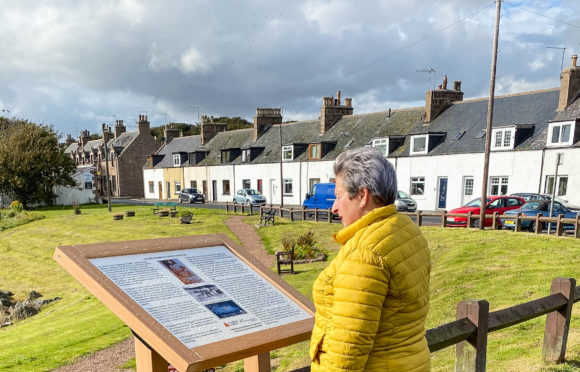A legendary aircraft crossing from 1914 is providing a lasting link between two coastal communities separated by the North Sea.
Identical information boards detailing Norwegian pilot Tryggve Gran’s record-breaking crossing have been installed in Cruden Bay, where he set off from at 1pm on July 30, 1914, and in Jaeren, Norway, where he landed little more than four hours later.
It wasn’t all plain flying for the 26-year-old and his Blériot monoplane, though, as the new lecterns, written in both English and Norwegian, explain.
Detailing the whole story, the lectern, in part, reads: “The flight was dramatic from the start; he narrowly avoided colliding with the overhead electric tram wires which connected the hotel and the station.
“Twenty miles out, he encountered sea fog and turned back. Landing on the beach, the aircraft overshot the sand, and to avoid hitting the rocks at the far end, Gran steered into the sea.
“He took off from the beach for his second attempt just after 1pm, and headed towards his native Norway.
“All went well until halfway across when, after changing fuel tanks, the engine cut out because of low pressure in the tanks and the aircraft plummeted.
“The down-draft started the propellers going again, and he flattened out 30 metres above the sea. He had ‘prayed to the good Lord to help me’.
“Tryggve Gran landed in a field on a farm near Stavanger in Norway, four hours and ten minutes after leaving Scotland. The 510 kilometre flight was one of the famous early air journeys.”
Mr Gran returned to Cruden Bay in 1971 to inaugurate a nearby memorial dedicated to his famous flight. He died in 1980.
Mike Shepherd of Port Erroll Heritage Group said: “The Cruden Bay lectern comes courtesy of a £1,500 grant from NorthConnect, a joint venture company who aim to build a power connection between Scotland and Norway to enable the exchange of renewable wind and hydro power.
“The Norway lectern is funded by a lottery sale of whisky bottles produced a few years ago to mark the crossing.”
The remainder of the grant has allowed the heritage group to install an information board about the history of Slains Castle, near the car park on Main Street.
